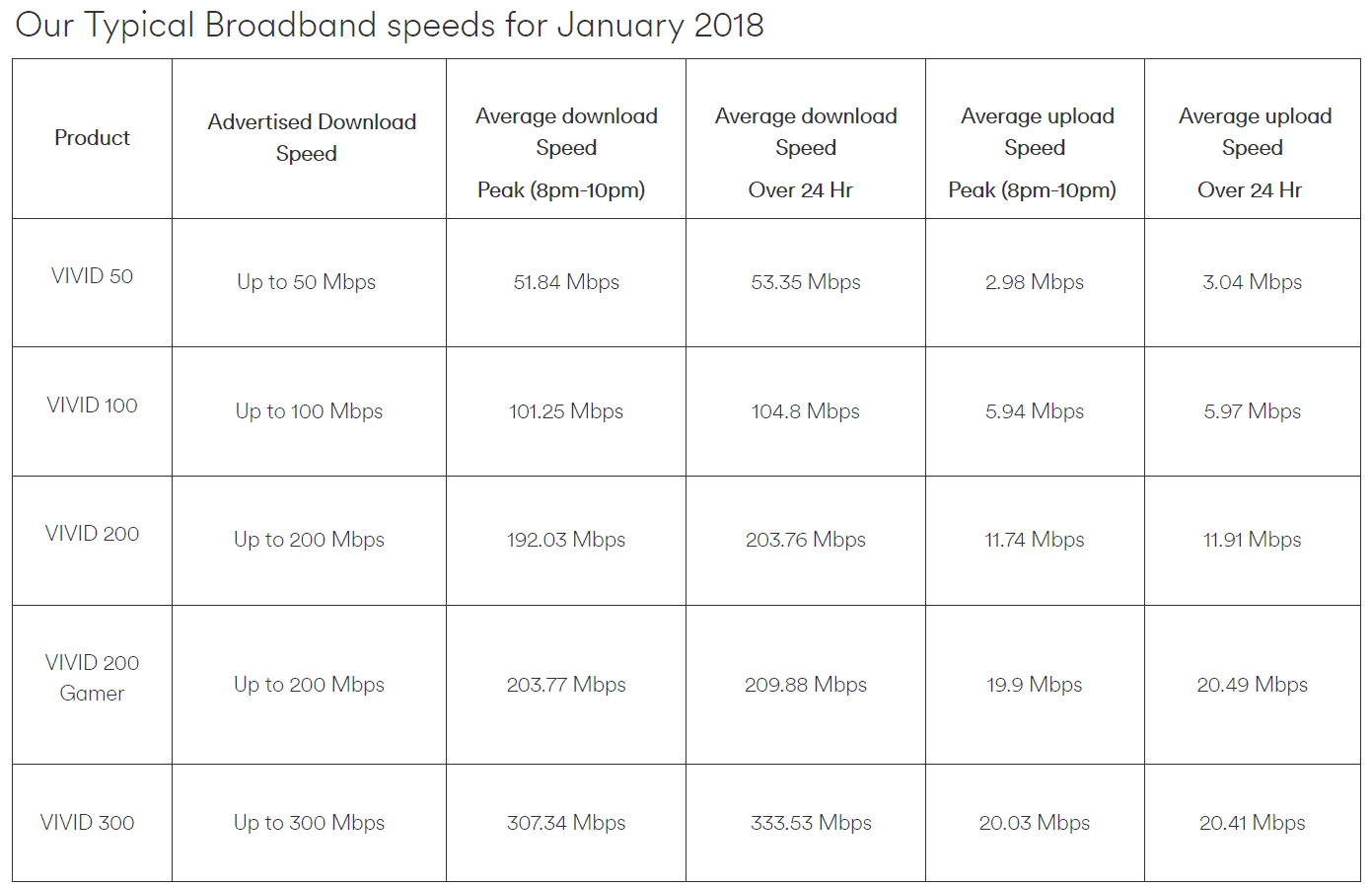Virgin Media Average Broadband Speeds Showing Improvement
Cable ISP Virgin Media looks to be in a good shape ahead of the forthcoming change in UK advertising rules. The provider has published a monthly update that reveals the “average” speeds of their broadband packages and in most cases they’re now delivering faster than the headline rate.
At present the existing guidance, which has been in place since 2012, requires that any headline broadband speed being promoted by an ISP must be achievable by at least 10% of their users (i.e. the fastest 10% of subscribers) and these figures should be preceded by an “up to” qualifier.
Last year the Advertising Standards Authority (ASA) announced that it intended to change this in the hope of making broadband speeds more representative (full details), which they will do from 23rd May 2018 by requiring all ISPs to advertise “average” speeds (i.e. a median download speed measured at peak [busy] time) for their packages.
Advertisement
The change represents bad news for copper line ADSL and hybrid fibre FTTC (VDSL2 / G.fast) based products because it will help to highlight the negative performance impact caused by issues such as interference over longer copper lines. However, in theory, the change should spell good news for pure fibre optic (FTTH/P) and cable (hybrid fibre coax) operators that often deliver closer or above their advertised rates.
Now take a look at the latest January 2018 update from Virgin Media, which highlights a good improvement over the same results from January 2017. For example, one year ago Virgin’s average download speed at peak time for their 50Mbps tier was 45.94Mbps (now 51.84Mbps), while their 100Mbps package delivered 87.23Mbps (now 101.25Mbps) and 200Mbps produced just 157.58Mbps (now 192.03Mbps).

It was of course expected that Virgin would do well here and in fact they often deliver slightly faster speeds than their headline rate. On top of that Virgin has done a commendable job of including upload speeds in their table, although sadly like most of the major ISPs they still don’t promote these on their product pages.
Advertisement
A Virgin Media Spokesperson told ISPreview.co.uk:
“Virgin Media continues to invest in network upgrades to make sure our customers get the fastest widely-available broadband speeds throughout the day – and we’re about to get even faster with the upcoming launch of 350Mbps. With the majority of our customers now getting speeds at peak times above those advertised, this investment is clearly making a difference.”
The results adopt the same data gathering method as Ofcom use for their annual fixed speeds report, which means that an unspecified number of Virgin’s subscribers install modified routers (SamKnows) that automatically test the connection in order to report more accurate results.
The only problem with this approach is that we don’t know the size or distribution of their testing base but due to the cost it’s unlikely to be large (e.g. Ofcom only have c.2,000 for most of the UK). Likewise we don’t know how Virgin selected their testers and whether it includes any homes with faulty or very slow lines, which might otherwise drag down the results. As always, take with a pinch of salt.
By comparison Thinkbroadband’s data for the same month, which covers a significantly larger sample size, suggested that Virgin Media’s 100Mbps service delivered a median average of 43.7Mbps, while 200Mbps delivered 82.3Mbps and their 300Mbps tier delivered 128.9Mbps. But remember that speedtest based results like this can easily be negatively hit by other big factors, such as slow WiFi and LAN congestion etc.
In practice what all of this means is that the cable operator will probably continue to advertise the same headline download rates as they do today because their own data now largely vindicates those.
Advertisement
So far the only ISP to actually adopt average speeds into their advertising has been Sky Broadband (Sky’s up to 17Mbps [ADSL] service got an “average” of 11Mbps and their up to 76Mbps [FTTC] became 57Mbps etc.) but others will soon follow.
NOTE: An “average” like this might be considered an improvement on the old 10% rule but it will still have winners and losers, with some people getting faster speeds and others receiving something slower.
Mark is a professional technology writer, IT consultant and computer engineer from Dorset (England), he also founded ISPreview in 1999 and enjoys analysing the latest telecoms and broadband developments. Find me on X (Twitter), Mastodon, Facebook, BlueSky, Threads.net and Linkedin.
« Multi Room TV Trial Gets Underway at UK Broadband ISP TalkTalk UPDATE


















































Comments are closed